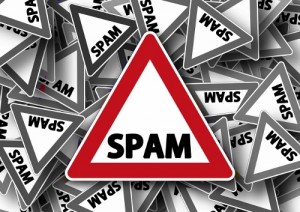Boost Your Creativity With the Sound of a Coffee House
- At October 18, 2018
- By rbadmin
- In Uncategorized
 0
0
Creative professionals love working in coffee houses. Novelists, graphic designers, ad copy smiths, comic book illustrators and screen writers can be found clicking away on laptops in cafes all over the world.
The website WorkFrom.co provides a nearly exhaustive list of the best coffee shops, bars and other work-friendly places away from home and the office in 700 major cities worldwide. You can search for places nearby and find them on a map. You can choose to see only those that have food, free Wi-Fi, sufficient wall outlets, and so on, and you can read reviews about each location written by other creative professionals who rate each place specifically on whether or not it’s a good place to work.
We love working in these places and most of us aren’t even sure why. We just know that we do. Coffee house are generally more pleasant places to hang out than sterile office cubicles, of course, but creative professionals who work from home are drawn to them just as much as employees chomping at the bit to get out of the office.
In his terrific book, The Mental Game of Writing, James Scott Bell insists that it’s because, whether we realize it or not, background noise stimulants creativity.
“Research into the area of creativity and ‘white noise’ asserts that a moderate level of sound helps creative people in their work,” he writes. “What appears to happen is that more parts of the brain are pinged when there’s a bit of background noise going on than where there’s total silence. You are working consciously on one thing, with particular focus, while other parts of your brain below the conscious level are turning gears and yanking pulleys. And every now and then the foreman sends up an idea your consciousness grabs hold of.”
The research comes from a team at the University of Illinois at Champaign-Urbana. They found that roughly 70 decibels of sound, the amount in a typical café, is optimal, whereas louder sounds, such as a garbage disposal running, are annoying and disrupting.
Ravi Mehta led the research team. He makes Bell’s point in a different way. Total or relative silence boosts concentration, which is terrific if you’re working on the math problem from hell, but no so great if you’re doing something creative, which requires deep and broad thinking rather than a laser-sharp focus.
“This is why if you’re too focused on a problem and you’re not able to solve it,” he told the New York Times, “you leave it for some time and then come back to it and you get the solution.” Moderate levels of background noise “help you think outside the box.” he said.
We can’t all spend eight hours a day five days per week in a café. Well, we could, but we’d spend a small fortune and probably suffer debilitating insomnia. The good news is that we can get a creative boost from background noise at home or in the office for free.
If you’re a coffee shop junkie, check out the Coffitivity website. They’ll pipe perfectly mixed recordings from various cafes right into your speakers or ear buds. You can hear the sound of espresso machines, clanking dishes and background chatter without any clearly annunciated words to distract you. (There are no recordings of jerks gabbing away on their cell phones.) Choose from three different tracks: Morning Murmur, Lunchtime Lounge and University Undertones. If you upgrade to Premium, you’ll have access to three additional tracks: Paris Paradise, Brazil Bistro and Texas Teahouse.
If the sound of a humming public place isn’t your cup of tea (sorry, couldn’t resist), you can always go with the sounds of nature. The CalmSound website has all kinds of free tracks, including ocean sounds, thunderstorms, Antarctic wind and more. These tracks were designed for relaxation and meditation, but they work just as well in the background while working.
You can never go wrong with music, of course, but writers generally do better with classical music and movie soundtracks without distracting lyrics.
Go on. Pop in your ear buds and give some of these tracks a spin. You might be surprised at what happens.
Stop Annoying Your Customers
- At October 10, 2018
- By rbadmin
- In Uncategorized
 0
0
A survey conducted by Pitney Bowes in the UK revealed which marketing channels annoy consumers the most and the least. It was conducted in Britain, but there’s no good reason to believe the results would be any different in the US, and none of the results are earthshaking or even surprising.
71 percent of those surveyed said they’re annoyed not just by telemarketers but by phone calls of any kind from any company. Three quarters of businesses, however, still call their customers.
Phone calls from businesses were always irritating, but they’re even more so now than they used to be. In the digital era, even friends and colleagues are reluctant to call each other and risk an interuption when a less intrusive email or text message will suffice. So why should anyone expect most people to welcome a phone call from a company in the middle of their meeting, lunch break, family dinner or date night?
The average person finds telemarketing so exasperating that the federal government created a Do Not Call registry to give citizens some relief. Most smartphones now allow subscribers to block individual phone numbers. The feature is sometimes used to block ex-friends and stalkers, but it’s overwhelmingly used to block telemarketers.
Calling people is also extremely expensive and labor intensive, and since it’s so unwelcome, businesses should seriously consider dialing it down at least a little if not a lot.
43 percent of consumers say they don’t like text messages from companies, either. That’s a lot better than the 71 percent who hate phone calls—text messages are a lot less intrusive—but still, almost half of consumers don’t like it. So if you’re sending texts to your customers or potential customers, now would be a good time to ask yourself seriously if the cost of annoying almost half of them is worth what you might be getting out of it.
Social media and email marketing are viewed as much less irritating. Most of us have spam filters in our email accounts now, and obvious spam messages can be deleted sight unseen with the click of a mouse. Still, more than half of those surveyed don’t want ads flooding their social media feeds unless they consent.
There’s some good news in there for advertisers, though. A little more than half the survey’s respondents said they’re willing to share personal information with companies for marketing purposes. Why? Because if they’re going to be bombarded with ads, they’d at least like those ads to be relevant.
The majority of businesses are gathering more personal information about their customers—including their hobbies and interests, buying habits, preferred travel destinations, and club memberships—but only a quarter of businesses say they’re using this information effectively.
This is what businesses should be focusing on. Rather than annoying their customers with phone calls and text messages, they should, as Kieran Kilmartin at Marketing Crunch put it, “improve the way they are collating, storing, accessing and managing data, so they can ensure it remains an asset. And they must take time to identify consumer preferences, integrating them into a consistent, creative, exciting omnichannel marketing strategy.”
Perfectionism Kills
- At August 11, 2017
- By rbadmin
- In Uncategorized
 0
0
Surely, at some point in your career, you’ve at least heard of that dreaded Human Resources interview question, “What’s your biggest weakness?” It’s a terrible question. It almost guarantees the interview subject will lie. And since anyone who asks it surely must know that, it diminishes people on both sides of the desk. Most of us think we know the “right” answer instinctively. “I’m a perfectionist.” It’s a weakness that comes across as a strength.
Professional psychologists know better. “Psychologists see perfectionism almost always as a handicap,” writes Adrian Furnham at Psychology Today. “They see perfectionists as vulnerable to distress, often haunted by a chronic sense of failure; indecisiveness and its close companion procrastination; and shame.”
Perfection is phantasmagorical. William Shakespeare still has his critics. So do Frank Lloyd Wright, Stanley Kubrick, J.K. Rowling and every other world famous master of his or her craft that you can think of. You won’t escape it either. Sorry.
But your productivity can crash along with your emotional state if you don’t get a grip on it. You’ll run into diminishing returns in the early stages of polishing your work to “perfection,” and you’ll eventually run into negative returns and end up hurting yourself.
Here’s an extreme real-world example:
A client of mine hired me to edit and independently publish a non-fiction book on Amazon.com. It took me a week or so to edit his book. It should have taken me another week or so at the most to turn his manuscript into an e-book and to design the trade paperback edition. He was so obsessed with the layout, though—with the font sizes, spacing before and after sub-headings, the position of his text boxes, the look of his chapter title pages, etc., that he had me fiddle with it on and off for more than six months. The final version was no better or worse than the first—it was just different. And he still wasn’t happy. He finally relented and sent me an email, saying he realized it was better to publish an imperfect book that to publish no book at all.
If only he’d figured that out six months earlier. He blew his own artificially imposed deadline and told me he lost thousands of potential sales at a conference he attended because his book wasn’t available yet. His bill was also sky-high when I finally invoiced him.
Most perfectionists don’t hurt themselves as badly as he did. Most perfectionists have employers who won’t let them delay their deliverables for the better part of a year. They still waste plenty of time, though, and their final work products aren’t much better—if they’re even better at all—after burning up so much angst.
This isn’t an argument for producing sloppy work. No one should ever produce sloppy work. Just don’t make the perfect (which doesn’t exist) the enemy of the good. Because if you do, your productivity is certain to crater and you’ll drive yourself crazy. Perfectionism isn’t a strength disguised as a weakness. It’s a genuine weakness that, in its extreme form, can be debilitating.
Enough With the Social Media Spamming
- At August 01, 2017
- By rbadmin
- In Uncategorized
 0
0
Let’s get something straight here. You will instantly tarnish your social media reputation—or at the very least annoy hundreds if not thousands of people—if you send everyone who follows you on Twitter a boilerplate pitch for your services.
Everyone who follows advertising, marketing and digital content specialists on Twitter has experienced this. “Thanks for the follow!” reads a typical message. “To get our free e-book on the latest SEO strategies, sign up for our weekly newsletter. No spam, we promise.”
That is almost word-for-word a message we received last week after following what appeared to be an interesting Twitter feed. The sender broke the no-spam promise right there in the message. Because make no mistake. An automatic Twitter message to every one of your followers is considered spam by just about everybody who reads it.
All of us who manage social media accounts in the marketing and advertising business routinely encounters this. Bruce Weinstein at Forbes says he immediately removes his connections with everybody who does it. He quotes Phil Gerbyshak, Vengreso.com’s chief digital officer. “Connect first, pitch last. Instead of pitching me, find me on LinkedIn, Twitter or Facebook, and comment genuinely on something I’ve shared or commented on not super recently via email. Offer a real insight or even disagree respectfully with me.”
Most of us have established relationships of some kind with people we first met on the Internet. Sometimes they become clients, other times employers or employees. They often become friends, and once in a while, they become spouses. Virtually none of these initially web-based relationships begin with some kind of a spam message.
No one is interested in hiring the first individual or company who spams them on social media. Feel free to promote your business, your services and your e-books on the Internet. Some of us might even be interested, but, if we are, our interest will be ignited organically. If you want to establish a business relationship with someone, start by interacting with them online like a real human being. It’s more time consuming, sure, but it’s also authentic and is far more likely to lead somewhere productive.
How to Get People to Read Your Content Rather Than Scan It
- At July 19, 2017
- By rbadmin
- In Uncategorized
 0
0
Most web page surfers don’t read the majority of the content in front of them. They scan.
And no, it’s not because the Internet obliterated everybody’s attention span. (At least that isn’t the only reason.) A hundred years ago, virtually nobody read an entire newspaper front to back. They scanned the headlines and skipped most of the articles. Most who took a deeper dive didn’t finish most what they started to read.
That’s okay. No one can read everything. More books are published every day than most people read in a year. More content is uploaded to the Internet every five minutes than most people can read in a year.
We all have to pick and choose—especially if we’re browsing the Internet during a guilty five-minute break at work.
Content producers need to remember that every time they write something for the web, whether it’s a news article, a sales pitch or a product description.
Here are some tips that will serve you well every time:
Use plenty of white space. Hardly anyone who isn’t forced to read an assignment for English class will trudge through something with paragraphs large enough to kill a human being. Try to limit the number of sentences in each paragraph to four if you can and five, max.
Use bullet lists. Break down some of your content into bullet lists if it’s appropriate. Just keep a few things in mind.
- Bullet lists don’t always work.
- List items should stand on their own. Don’t reduce them to single words.
- If one of your bullet list items is a complete sentence, all of them should be.
- Alternatively, if one of your bullet list items is a sentence fragment, all of them should be.
Create bold-face sub-headings like this one. People who scan a web page will almost certainly read the bold-face sub-headings if they don’t read anything else. If you can boil the gist down to four or five simple points, consider highlighting them. Those who scan your content will get it while those who read the whole thing will be rewarded with depth.
Search and destroy all unnecessary words. Nothing bogs down a piece of writing more than bloated sentences. If you spend five words every time two will do, your content will look like hard work before readers even get started. And as soon as they do get started, you’ll transform all but the most committed into scanners—and that’s if you’re lucky. Most will move their mouse up toward the Back button.





